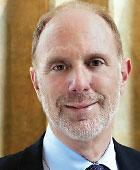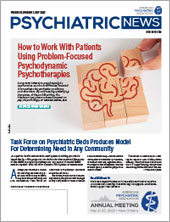The COVID-19 pandemic has both opened and closed windows on addictions. My patients with chemical addictions—from alcohol to opiates—spent the pandemic locked in their rooms and hidden from the in-person gaze of health care professionals, friends, and family. Fueled by these circumstances, their addictions got worse.
My patients with gambling addiction sought new ways to feed their compulsions. While in-person poker games and casinos were shut down, a plethora of new online sites increased their access to gambling.
Those with sexual compulsions (“sex addiction”) behaved differently. Many people with sexual addictions continued their virtual experiences during the pandemic, including porn, sexting, and cybersex. Yet, out of fear for their lives, most of my patients with sexual addiction completely abandoned the forbidden, in-person hookups and daily commercial sex with sex workers. Does this deliberate curtailment make their addictions any less real?
Nowadays, we think of addictions as more than mere physiological dependency on chemicals like alcohol, cocaine, and opiates. We view them according to a disease model as experiences culminating in brain interactions that highjack the dopamine-reward system. Consequently, addictions now include behaviors like online gaming (video games), gambling, and problematic and compulsive sex.
Today, with COVID-19 precautions receding, sexual addiction among my patients is back on the rise. Does the fact that those addicted to sex abstained from life-threatening encounters with strangers during a global pandemic suggest their addiction is a fake disease? If not, why was it so responsive to pandemic fears?
Already highly controversial, a diagnosis of sexual addiction as a dependency is further complicated, and often dismissed, because it responds to opportunities in the culture. Dependencies never occur in a vacuum. The repeal of prohibition increased alcohol consumption and alcoholism. The Vietnam War introduced heroin to a subset of men vulnerable to addiction. Substance use is influenced by any number of forces in our culture and environment, which is why I encourage my patients to support their sobriety by avoiding people, places, and things associated with their addictive substance or behavior. But just because outside factors can help feed or freeze addictive behaviors doesn’t make the addiction any less real.
All addictions are a consequence of a person’s psychology, culture, and biology combined with affordability, anonymity, and access. Knowing this, therapists use disincentives to treat addictions. With chemical addictions, medications that counteract the substances—disulfiram, which turns alcohol into poison, and naltrexone, which prevents the euphoria of opiates—help stop the abuse. Some therapy programs successfully use token behavioral reinforcements, essentially paying people to refrain from using drugs.
Sex is a vital and healthy human drive that most of us have learned to manage. Nearly everyone gets obsessed with a sexual relationship at some point in their lives. Consequently, I am regularly asked, with an air of deep skepticism, How can we become addicted to sex—a drive essential to our species’ survival? My response: If we can become addicted to anything, it would be sex. Our brains did not evolve to become turned on by opiates or alcohol, but our minds did adapt to become driven by behaviors essential to our survival, such as eating and procreation. Sometimes, the wires get crossed.
Sexual addiction is a subversion of the healthy, adaptive instinct to connect, seek pleasure, and procreate. Significantly, however, this compulsion does not lead those affected to pursue lots of sex with available partners. Instead, my patients tend to have terrible sex lives with their available partners. And, at the expense of their jobs and families, they spend hours of most days on porn, seeking out “bad” (by their own definition) sexual encounters or become obsessed with commercial sex. Their compulsive behaviors cause irreparable damage to their lives and relationships and can result in great anguish and even suicide.
As psychiatrists, our ideas about sexual addiction are evolving. In the last full revision of DSM in 2013, APA understandably did not include sexual addiction. (DSM-5 lists only gambling disorder as the sole behavioral or nonchemical addiction.) However, in the 2019 revision of its diagnostic manual, the World Health Organization added compulsive sexual behavioral disorder to the category of “Impulse Disorders.” As a consequence, APA Publishing published a 2021 book on the diagnosis, Compulsive Sexual Behavior Disorder: Understanding, Assessment, and Treatment. I contributed to the chapter “Clinical Evaluation of CSBD.”
Perhaps the most controversial and explosive concern about this diagnosis is that sexual addiction can be used as an excuse for bad behavior. Is an unfaithful spouse a sex addict? Some of the time, but rarely. How about sexual offenders, people who commit sexual assaults against others? For most clinicians, the sexual addiction diagnosis is reserved for people who engage in consensual sex and is not used for those who engage in sexual crimes.
We need to apply especially rigorous clinical criteria when evaluating it as a disorder. Because so many people are embarrassed by some hidden sexual desire that they consider “sick,” it’s a diagnosis that some patients embrace too quickly. Over the course of my career, I have met religious people who desperately seek treatment as “sex addicts” simply because they want to masturbate. I’ve met with patients who would choose chemical castration rather than confront their deep desires for people of the same gender. I’ve counseled these people against sexual addiction treatment and urged them into psychotherapy to deal with shame.
For two decades, I’ve judiciously used the diagnosis of sexual addiction because it provides patients with a path from compulsive behaviors to recovery. People benefit from psychotherapy, medications, and “sex” 12-step recovery fellowships that follow a format similar to that of Alcoholics Anonymous. Treatment can save lives. But like everything else in psychiatry, the diagnosis needs thoughtful discernment. To apply it carelessly or to dismiss the diagnosis completely would mean casting aside life-changing recovery options for patients and their families now struggling with deep, yet treatable pain.
The pandemic has killed over six million worldwide and traumatized hundreds of millions of others. It has revolutionized virology. In the area of mental health, COVID-19 made us painfully aware of the psychological costs of isolation and stress, launched the widespread use of teletherapy and telepsychiatry, and revealed the lasting brain consequences of a viral illness (so-called long COVID). It has also demonstrated the malleability and variability of mental disorders including addictions. We can only hope that our knowledge will be put to good use. ■

